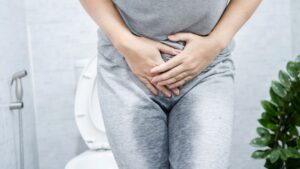
Incontinence is a common medical condition that can affect people of all ages. It refers to the involuntary loss of urine or feces and can have a significant impact on a person’s quality of life. There are several types of incontinence, including stress incontinence, urge incontinence, overflow incontinence, and mixed incontinence. The evaluation and treatment of incontinence depend on the specific type and underlying causes. Here is an overview of the evaluation and treatment of incontinence:
Evaluation:
- Medical History: The first step in evaluating incontinence is to take a detailed medical history. This includes information about the type of incontinence, onset, frequency, and any triggering factors or associated symptoms.
- Physical Examination: A physical examination may be performed to assess the overall health of the patient, and to identify any physical abnormalities or underlying medical conditions that could be contributing to incontinence.
- Voiding Diary: Patients may be asked to keep a voiding diary to record the timing and amount of fluid intake, urine output, and incontinence episodes over a few days. This helps identify patterns and potential triggers.
- Urinalysis: A urinalysis can help detect urinary tract infections and other abnormalities in the urine.
- Post-Void Residual Measurement: This test measures the amount of urine left in the bladder after urination to assess bladder emptying.
- Urodynamic Testing: More advanced tests like urodynamic studies may be recommended to evaluate bladder and urinary sphincter function. These tests provide more information about the bladder’s ability to store and empty urine.
- Imaging Studies: In some cases, imaging studies like ultrasound, CT scans, or MRI may be used to assess the anatomy of the urinary tract.
- Cystoscopy: A cystoscopy involves inserting a thin tube with a camera into the bladder to examine the bladder lining and urethra for abnormalities.
Treatment:
The choice of treatment for incontinence depends on the type and underlying causes. Here are common treatment options:
- Lifestyle Modifications: This may include dietary changes, weight loss, and bladder training to improve urinary control.
- Pelvic Floor Exercises: Kegel exercises can help strengthen the pelvic floor muscles and improve bladder control, especially for stress incontinence.
- Medications: Certain medications may be prescribed to relax the bladder (anticholinergics) or strengthen the urethral sphincter (alpha-blockers) in cases of urge incontinence.
- Physical Therapy: Pelvic floor physical therapy can help individuals learn to better control their pelvic muscles and improve bladder function.
- Incontinence Devices: Devices such as pessaries, external catheters, and absorbent pads or garments can help manage incontinence.
- Surgery: In some cases, surgical procedures may be recommended. For example, a sling procedure can be done to treat stress incontinence, while bladder neck suspension or artificial sphincters may be used for more severe cases.
- Behavioral Therapies: These can include bladder training and biofeedback to help control bladder function.
- Botox Injections: Botox can be injected into the bladder to relax its muscles, which is useful for treating urge incontinence.
- Neuromodulation: This involves stimulating the nerves that control bladder function and can be effective for certain types of incontinence.
The choice of treatment should be individualized based on the specific type of incontinence, its severity, and the patient’s overall health. It’s important to consult with a healthcare professional, for a comprehensive evaluation and personalized treatment plan.
Take Charge of Your Health with Comprehensive OB/GYN Care!
Book your appointment today to ensure your well-being at every stage of life. Our team of experienced OB/GYN specialists is here to provide you with expert care, support, and guidance. Don’t wait, prioritize your health today!


